Palazzo Vecchio - Table of Contents ........................... Piazza della Signoria - Table of Contents
Museum - Palazzo
Vecchio
(pronounced: pa LOTS
oh
VAKE eeoh)
AKA: Palazzo del Popolo ... Palazzo dei
Priori, ... Palazzo Ducale
Piazza
della Signoria,
Florence, Italy
Much of
Palazzo Vecchio is open to the public and can be visited as a museum.
On this page, below:
Three Ceilings
Double doors
Renaissance style furniture
Grand Duke Cosimo I's crown
February 2020 photos
| The Hall of the Five Hundred /
Salone dei Cinquecento The origins of the Great Hall of the Five Hundred date back to a room built at the end of the fifteenth century to accommodate the meetings of the Florentine Council. Cosimo I moved to Palazzo Vecchio in 1540 and transformed it into the magnificent room we see today. In addition to being a museum today, it is also used for important ceremonies and events 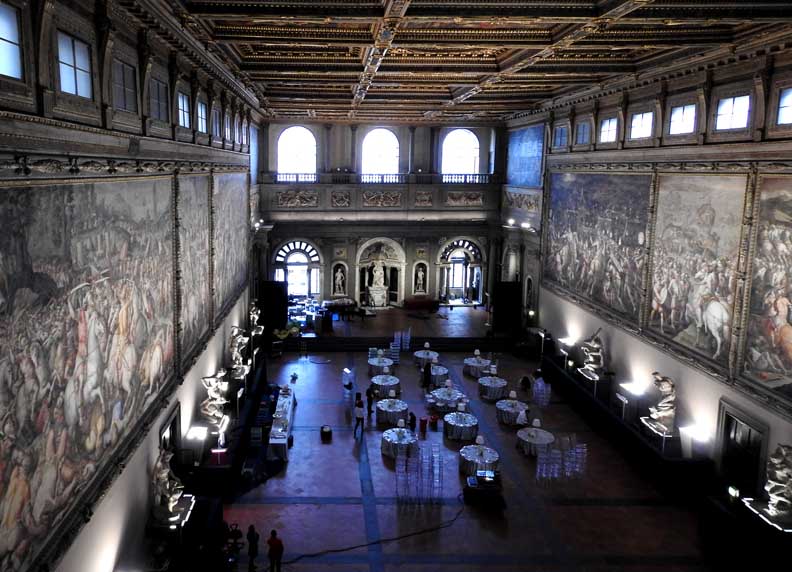 The Hall of the Five Hundred  The Hall of the Five Hundred  The Hall of the Five Hundred Supposedly the largest room in Italy made for a civil power palace ... "The Hall of the Five Hundred was built in 1494 by Simone
del Pollaiuolo and Francesco Domenico and commissioned by Fra Girolamo
Savonarola. Savonarola
had ousted the Medici from power for a short period and had founded a
new Florentine Republic, which lasted between 1494 and 1498. He
tried to establish a more democratic government for the city of
Florence and thus created the Council of Five Hundred (or Great
Council), consisting of five hundred people, modeled after the Grand
Council of Venice. In
this way, the decision-making power belonged to a greater number of
citizens, and it was more difficult for a single person to take control
of the city.
"Later, the Medici returned to power and in 1540 chose Palazzo Vecchio as a residence, radically transforming it. Most of the work was entrusted to Giorgio Vasari. The Salone dei Cinquecento was transformed from a place of celebration of the power of the Republic to the boardroom of the Duke Cosimo I de’ Medici, where he received ambassadors and gave audience to the people." - Florence Inferno (online May 2020) 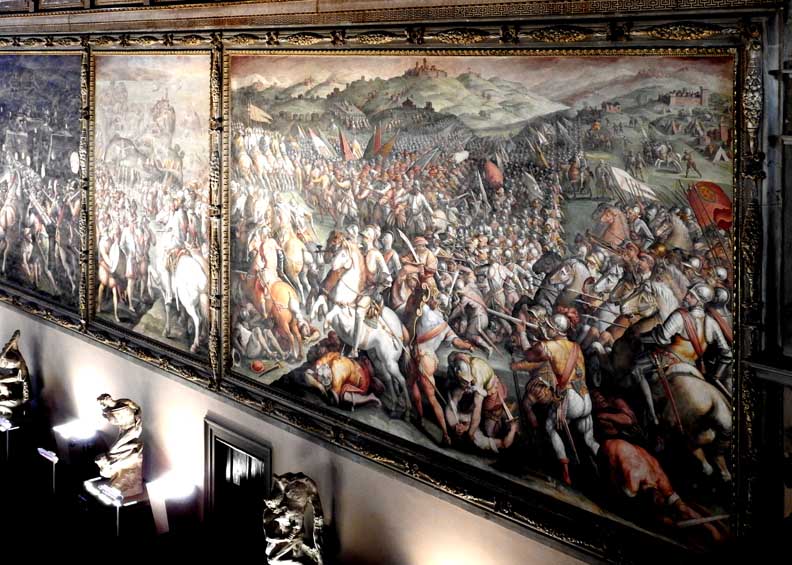 The Hall of the Five Hundred Three of the six scenes of battle that represent the military successes of Cosimo I against Pisa (1496–1509) and Siena (1553–1555) 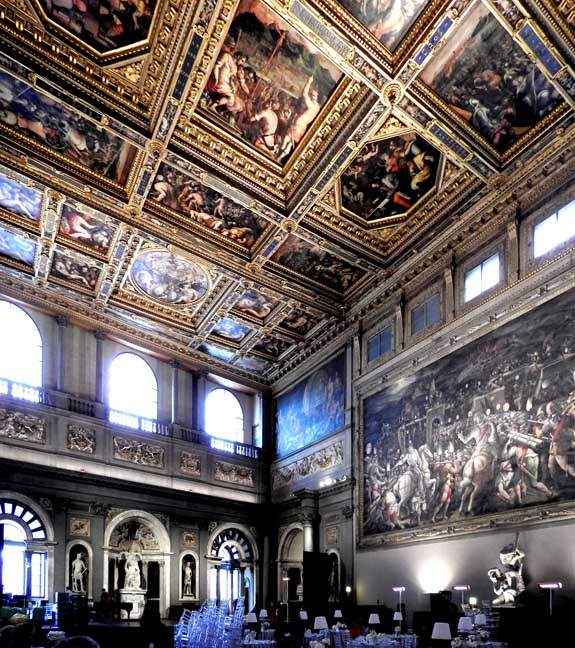 The Hall of the Five Hundred "The decorations, therefore, had to exalt and glorify the Medici family. To accentuate the grandeur of the hall, Giorgio Vasari raised the ceiling seven meters, covering the truss structure with a beautifully decorated coffered ceiling. The forty-two panels were carried out by a team of painters coordinated by Vasari." - Florence Inferno (online May 2020)  The Hall of the Five Hundred Some of the forty-two coffered panels  The Hall of the Five Hundred Some of the forty-two coffered panels 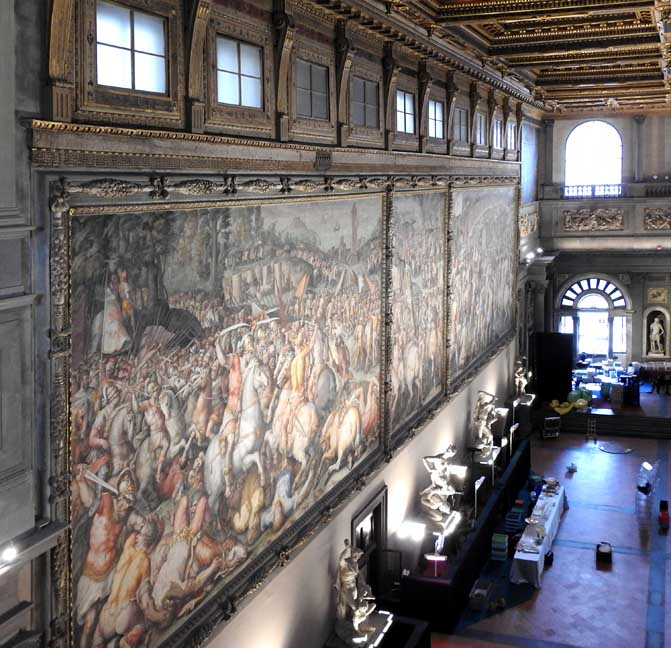 The Hall of the Five Hundred Three of the six scenes of battle that represent the military successes of Cosimo I against Pisa (1496–1509) and Siena (1553–1555) ... Two details below: 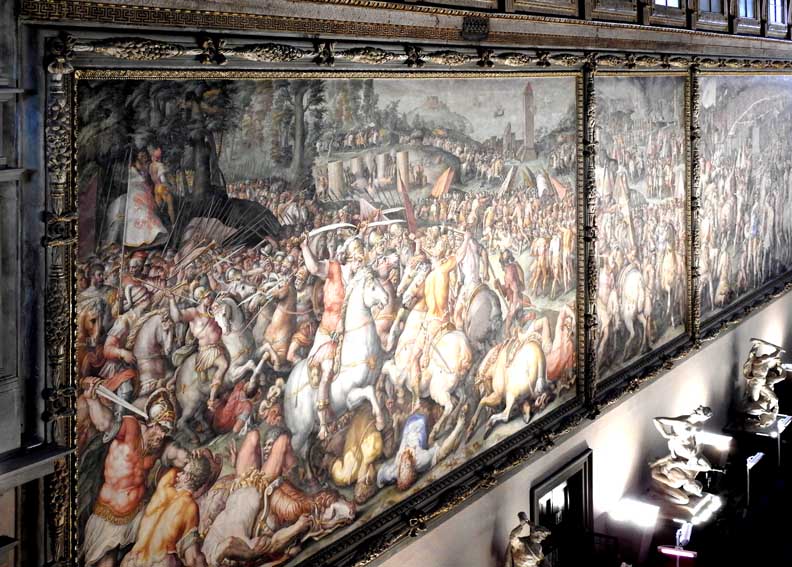 The Hall of the Five Hundred Another detail below:  The Hall of the Five Hundred |
| Francesco
I's Private Studio Francesco I de' Medici, Grand Duke of Tuscany: the son of Cosimo I de' Medici, Grand Duke of Tuscany, and Eleanor of Toledo. He served as regent for his father Cosimo after he retired from his governing duties in 1564.  Francesco I's Private Studio 1570-72, by teams of artists under the supervision of Giorgio Vasari ... Barrel-vaulted ceiling  Francesco I's Private Studio  Francesco I's Private Studio Middle panel detailed below: 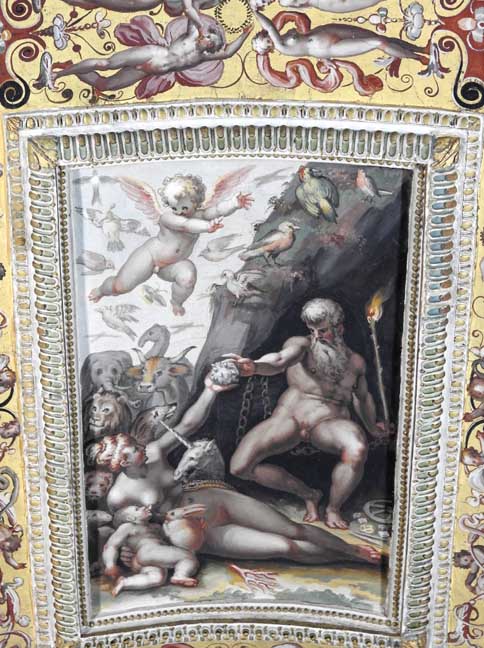 Francesco I's Private Studio "Prometheus and Athena" ... Prometheus shaped man out of mud, and Athena breathed life into his clay figure; later, Prometheus defied the gods by stealing fire from Zeus and giving it to mortals  Francesco I's Private Studio Cosimo I, father of Francesco I By Alessandro Allori, 1572, oil on slate ... Style: Mannerist ... See also: Statue of Cosimo I in the Piazza della Signori  Francesco I's Private Studio Eleanor of Toledo, Mother of Francesco I By Alessandro Allori, 1572, oil on slate ... Style: Mannerist |
Three
Ceilings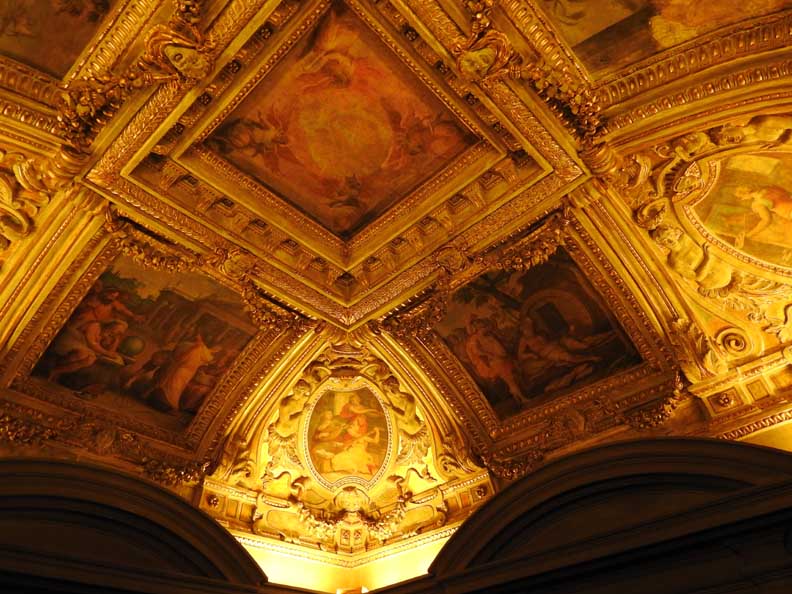 Every ceiling in the museum is spectacular ... Plaster borders around paint ... Detail below:  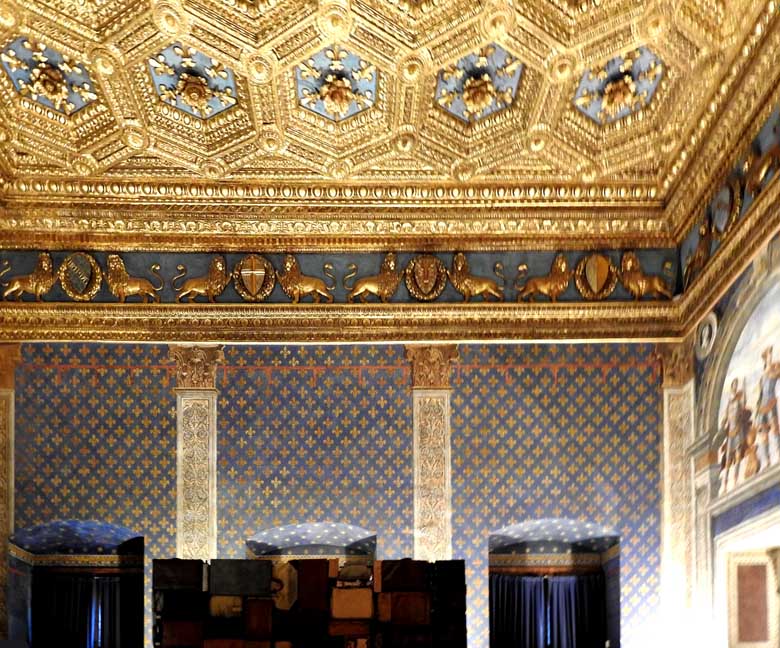 Coffering detailed below: 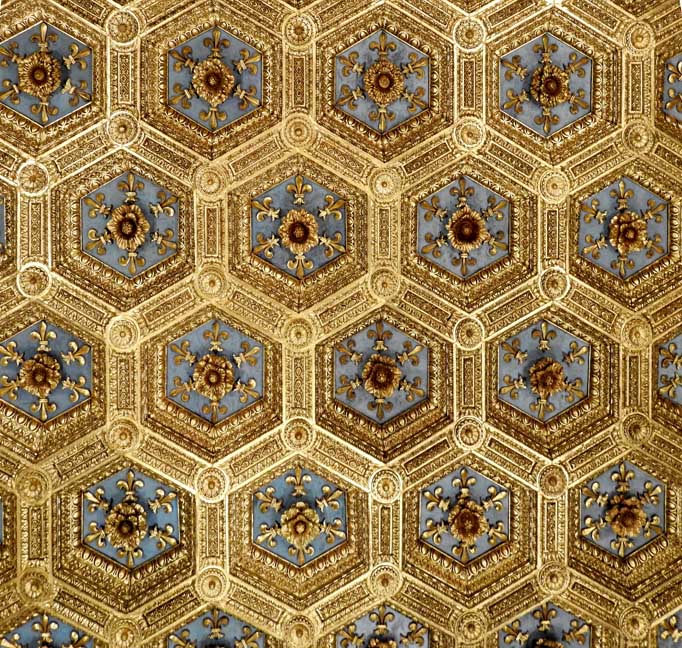 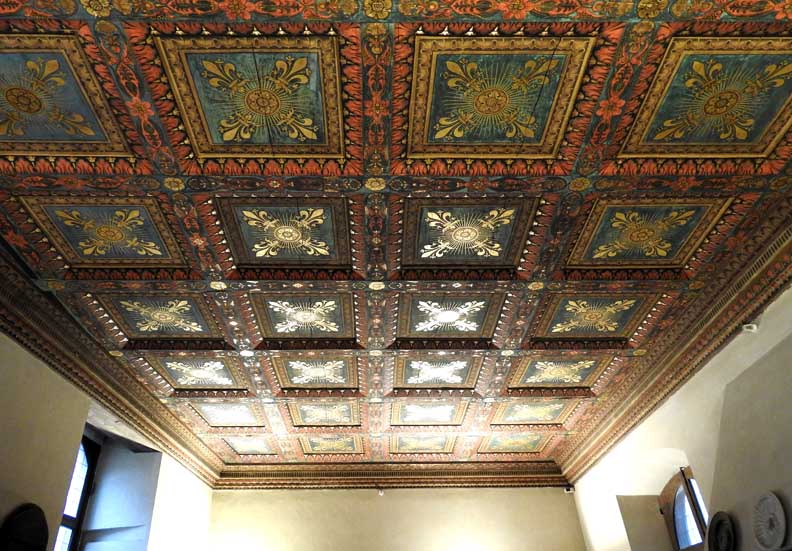 Coffering detailed below: 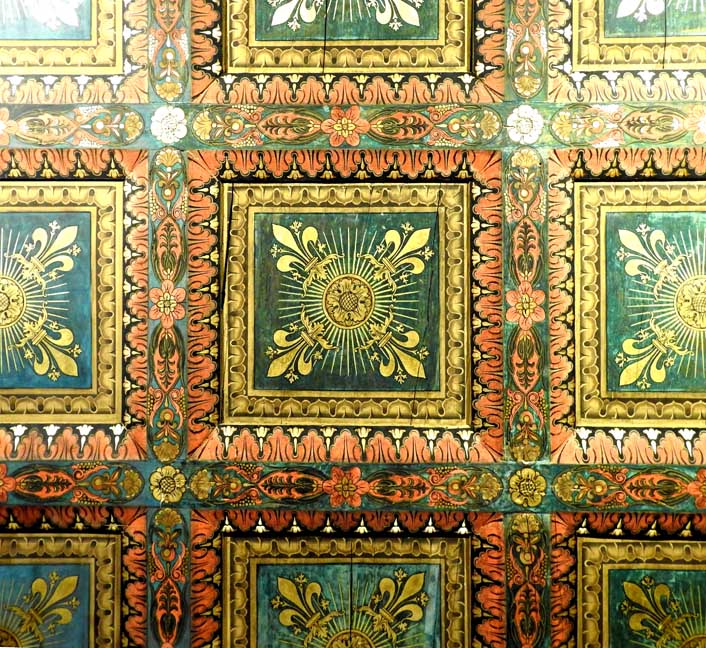 Florence fleurs-de-lis |
Carved double doors  Broken pediment above door surround ... Two details below: 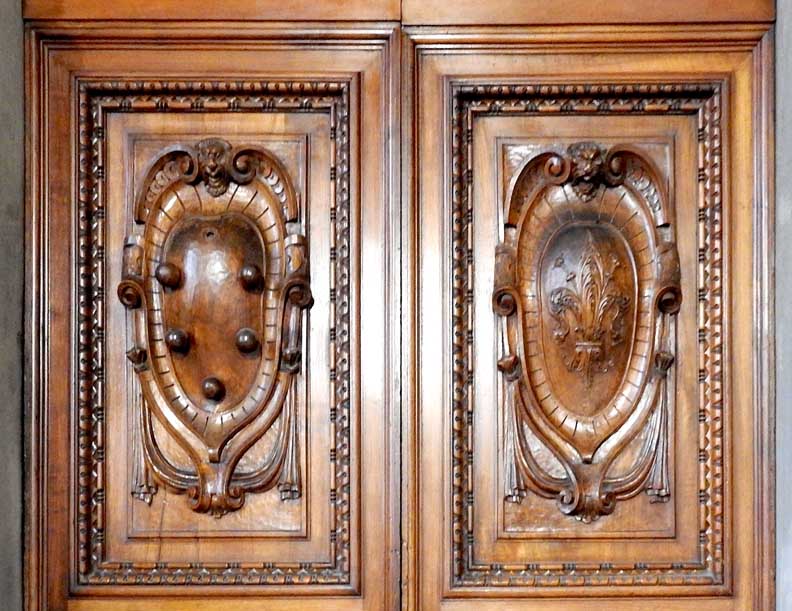 C- scrolls surround the cartouches ... Left cartouche Medici emblem ... Right cartouche: Florence fleurs-de-lis 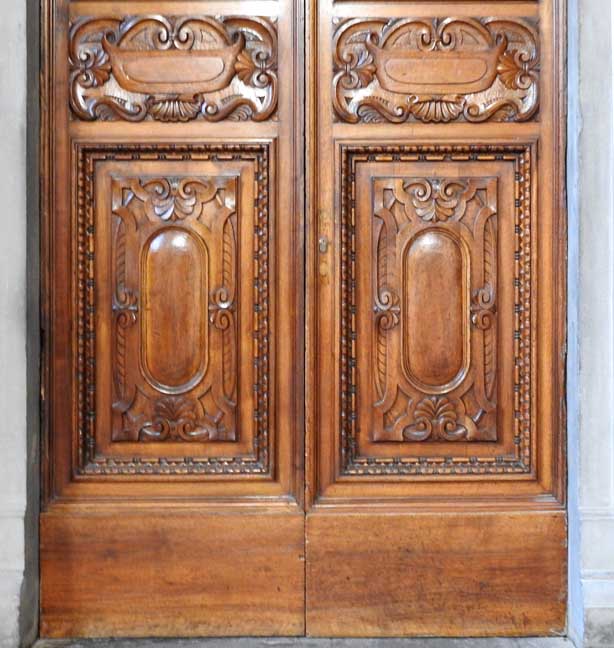 C- scrolls surround the cartouches |
Renaissance style furniture 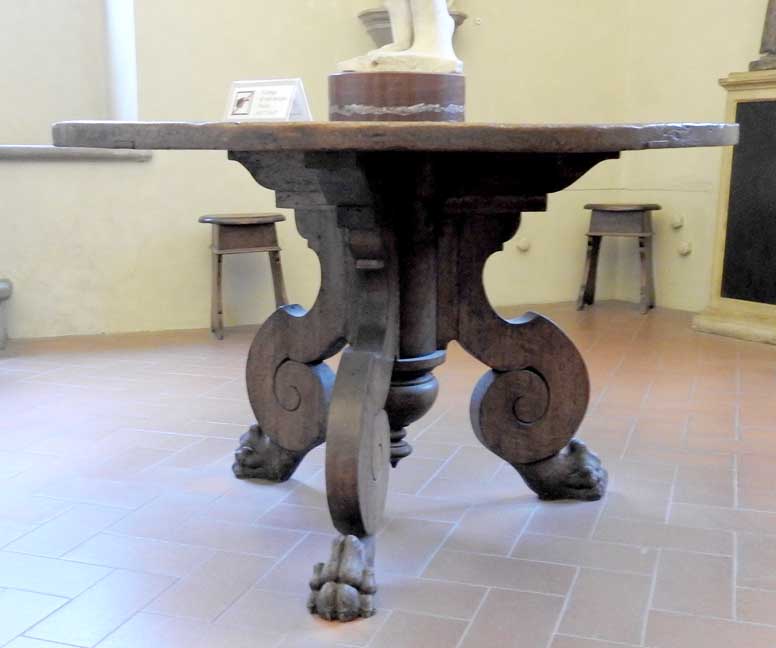 Renaissance style Carved walnut table ... Scrolled legs with lion paw feet ... Drop finial ... Three details below:  Renaissance style Walnut 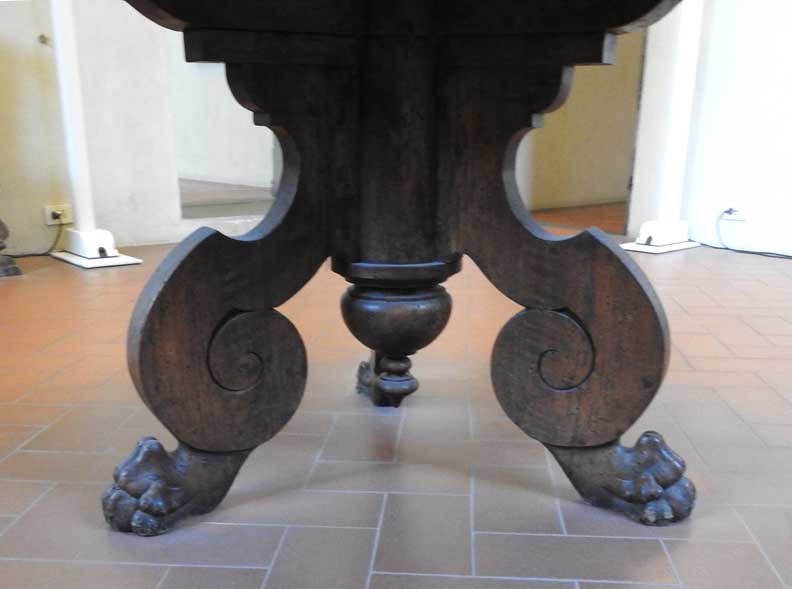 Renaissance style Scroll legs with lion paw feet ... Drop finial 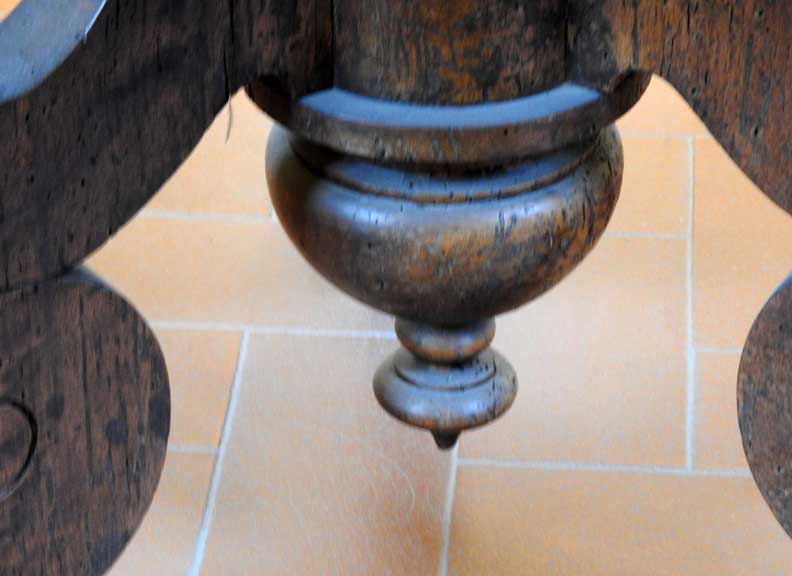 Renaissance style Drop finial 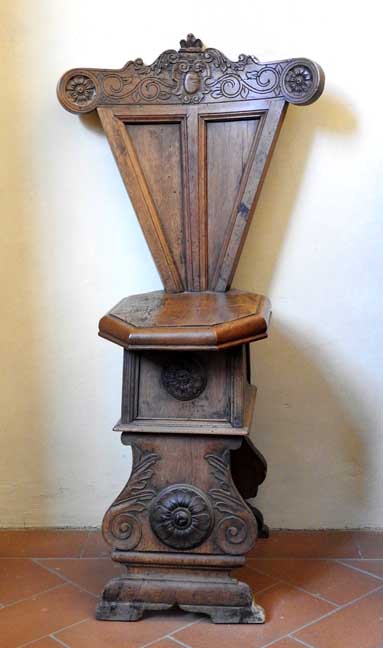 Renaissance style - Italian sgabello hall chair ... Sgabello #1 ‘Sgabello’ chairs adorned the entrances of noble palazzi in the 16th century ... Incised and carved 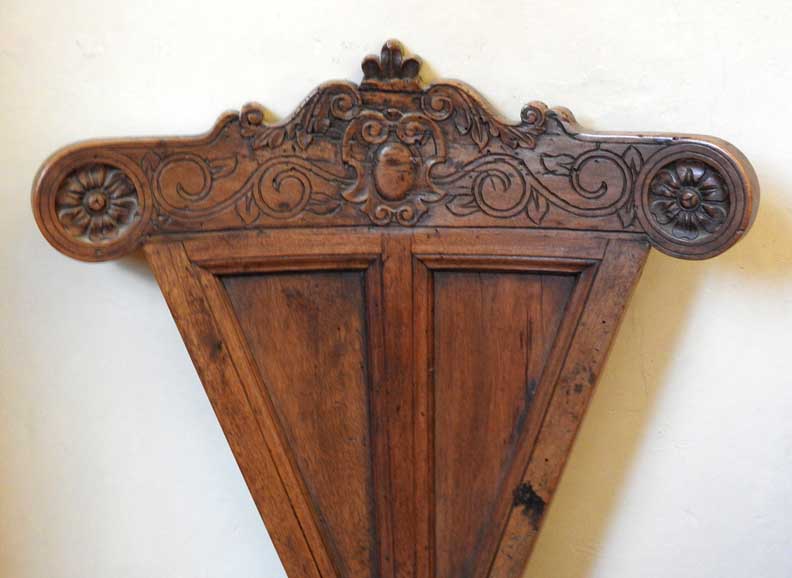 Renaissance style - Italian sgabello hall chair ... Sgabello #1 Incised and carved 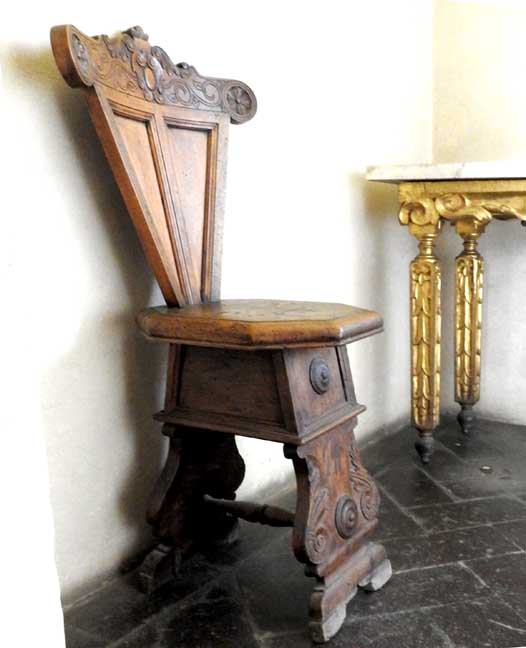 Renaissance style - Italian sgabello hall chair ... Sgabello #1 Legs: two decorated boards with a stretcher for support  Renaissance style - Italian sgabello hall chair ... Sgabello #1 Front leg is a decorated board featuring acanthus leaf scrolls  Renaissance style - Italian sgabello hall chair ... Sgabello #2 Legs: two decorated boards (without a stretcher for support)  Renaissance style - Italian sgabello hall chair ... Sgabello #2 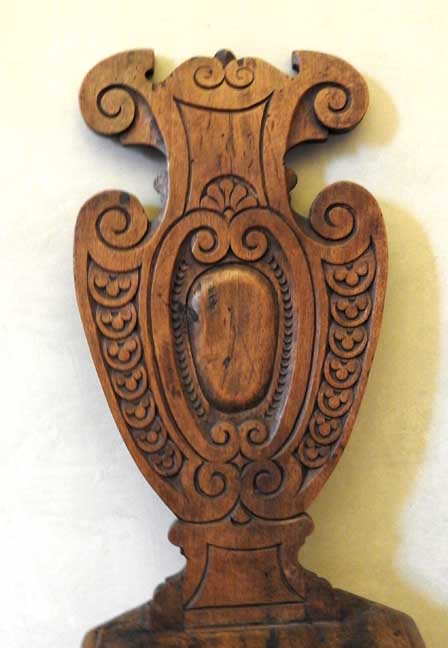 Renaissance style - Italian sgabello hall chair ... Sgabello #2  Renaissance style - Italian sgabello hall chair ... Sgabello #2 |
Royal crown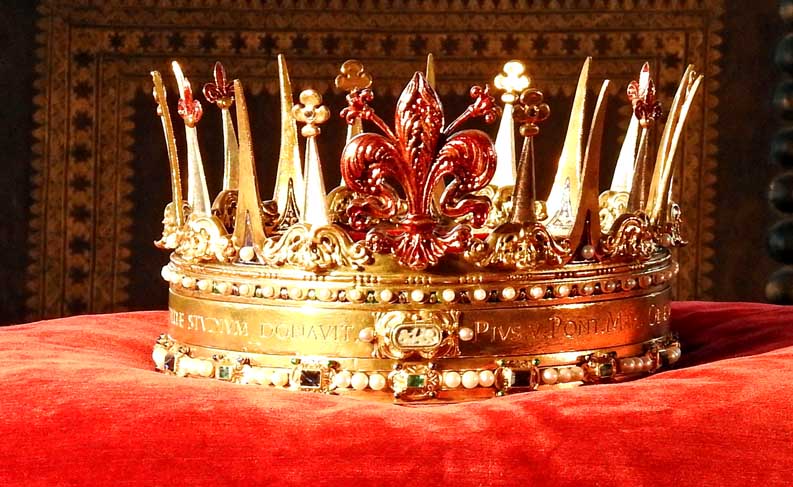 Grand Duke Cosimo I's crown ... Pope Pius V granted Cosimo the right to wear a royal crown in 1569 ... Note fleurs-de-lis ... The large center fleur-de-lis is a Florentine type, i.e., it has stamens  Red Florentine fleur-de-lis with stamens ... This large sculpture is currently in storage |